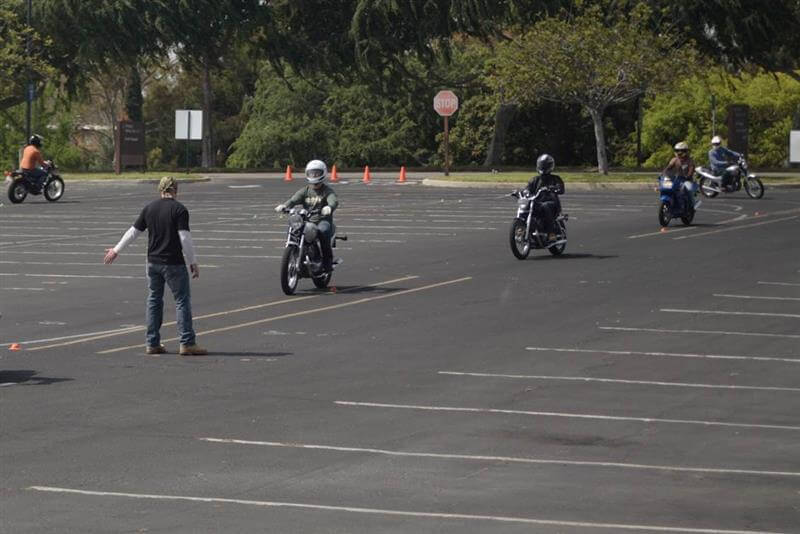Riding Skills: The Tune Up Least Done

You've recently taken the sheets off your old faithful, your forgotten metal horse. Your beloved motorcycle's been collecting dust, thanks to kids, spouse, job, whatever reason it was that made you (temporarily) stop riding.
It's going to need a lot of retuning. From engines, to brakes, maybe even the electronics. But the one thing returning riders forget is that even riding skills can get rusty.
Traffic conditions change, traffic rules even change, and motorist attitudes change. To ensure you're as ready as your motorcycle to hit the roads again, you need to pay attention to basic riding skills and ensure they're as sharp as they used to be.
1. Learn how auto drivers are driving
Most motorcycle accidents are collisions with automobiles, not collisions with the roadside bushes. Some auto drivers are as aggressive in parking lots and alleys as they are at controlled intersections. Roughly a third of motorcycle accidents occur at four-way intersections, and another third on residential side streets. A good way to update your traffic predicting skills is to stand on the corner of a busy intersection and watch what's happening. Predict where various cars are going to go, and try to spot clues such as quick glances to the side by a driver, or a vehicle wandering toward the side of the lane.
2. Lethal turns
According to the Hurt Report, 28% of all motorcycle accidents occur with the car making a left turn in front of the motorcycle, and the rider usually slamming into the side of the car and catapulting over the roof. Always assume the car in front of you is going to make a sudden, unannounced turn.
3. Practice that swerve
Countless riders have lucked out in a dangerous situation by swerving out of the way of errant motorists or surprise manholes. Get the bike up to a modest 35 or 40 mph, and consciously push on the left grip. The motorcycle will lean left. Push on the right grip to steer toward the right. An emergency swerve is just two quick turns close together.
4. 100 to 0 in?
Everyone knows how to drag race, but do you know how to make sudden stops? The trick to quick stops is simple: apply maximum braking on both wheels, just short of skidding the tires. Two primary errors many riders make when braking are to squeeze the front brake too quickly, and to overcook the rear brake toward the end of the stop.
It's going to need a lot of retuning. From engines, to brakes, maybe even the electronics. But the one thing returning riders forget is that even riding skills can get rusty.
Traffic conditions change, traffic rules even change, and motorist attitudes change. To ensure you're as ready as your motorcycle to hit the roads again, you need to pay attention to basic riding skills and ensure they're as sharp as they used to be.
1. Learn how auto drivers are driving
Most motorcycle accidents are collisions with automobiles, not collisions with the roadside bushes. Some auto drivers are as aggressive in parking lots and alleys as they are at controlled intersections. Roughly a third of motorcycle accidents occur at four-way intersections, and another third on residential side streets. A good way to update your traffic predicting skills is to stand on the corner of a busy intersection and watch what's happening. Predict where various cars are going to go, and try to spot clues such as quick glances to the side by a driver, or a vehicle wandering toward the side of the lane.
2. Lethal turns
According to the Hurt Report, 28% of all motorcycle accidents occur with the car making a left turn in front of the motorcycle, and the rider usually slamming into the side of the car and catapulting over the roof. Always assume the car in front of you is going to make a sudden, unannounced turn.
3. Practice that swerve
Countless riders have lucked out in a dangerous situation by swerving out of the way of errant motorists or surprise manholes. Get the bike up to a modest 35 or 40 mph, and consciously push on the left grip. The motorcycle will lean left. Push on the right grip to steer toward the right. An emergency swerve is just two quick turns close together.
4. 100 to 0 in?
Everyone knows how to drag race, but do you know how to make sudden stops? The trick to quick stops is simple: apply maximum braking on both wheels, just short of skidding the tires. Two primary errors many riders make when braking are to squeeze the front brake too quickly, and to overcook the rear brake toward the end of the stop.
|
Posted on April 19 2017